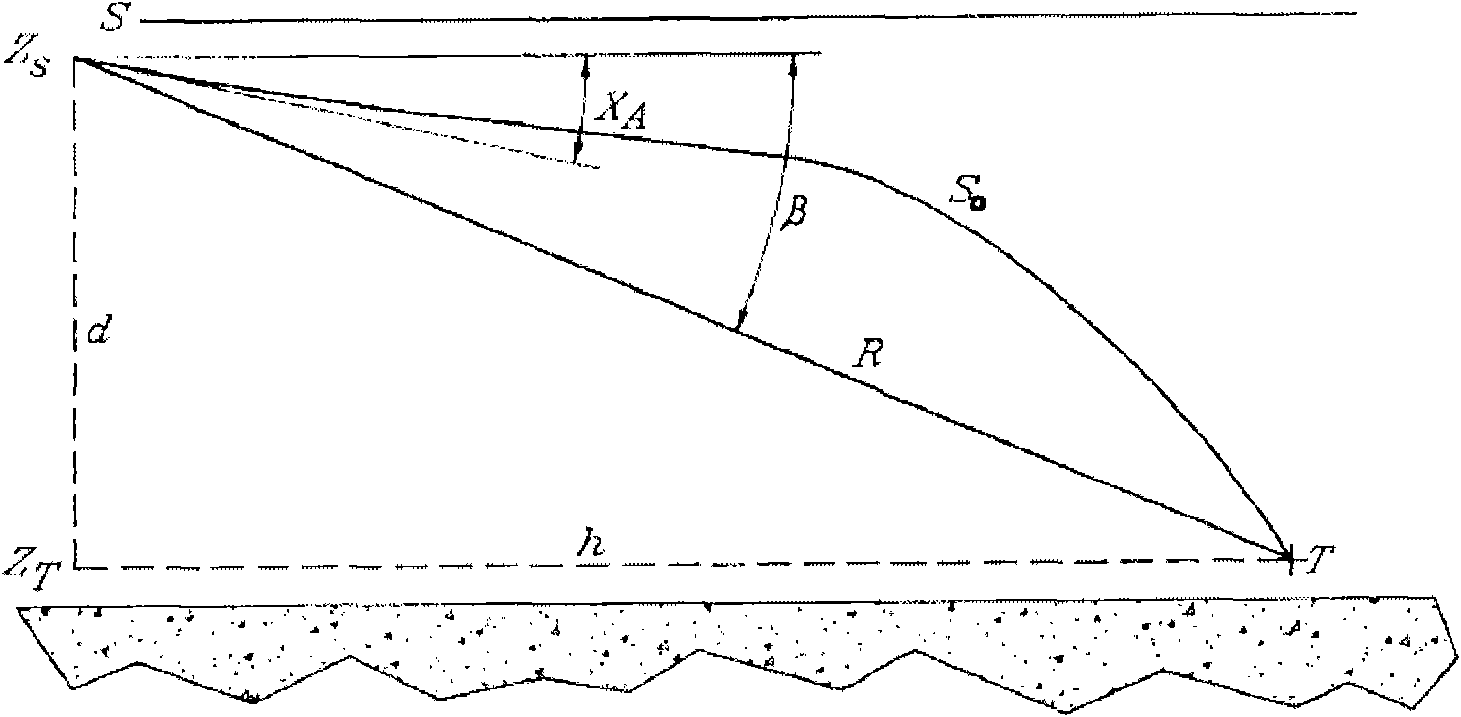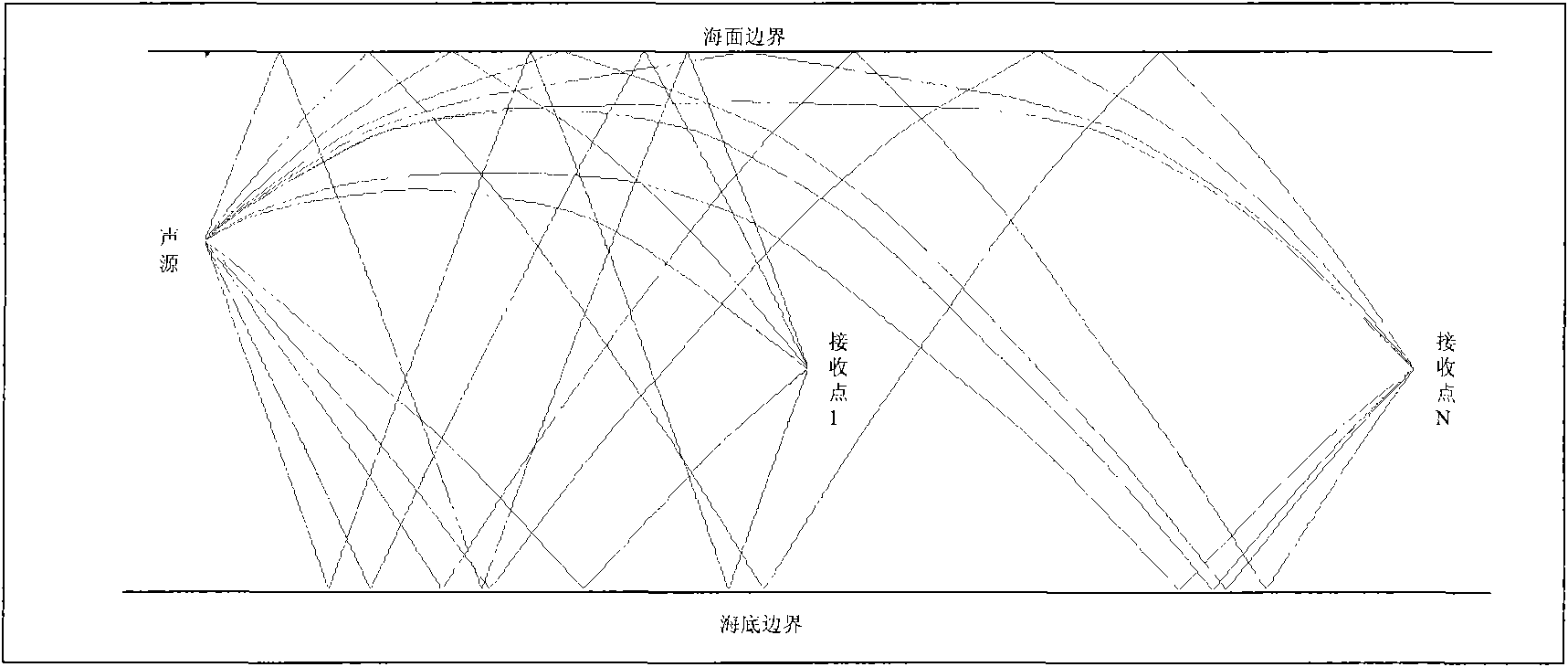Underwater sound channel effective sound velocity estimating method based on intrinsic sound ray visual search
An underwater acoustic channel and intrinsic sound ray technology, which is applied in the measurement of ultrasonic/sonic/infrasonic waves, measurement of propagation velocity, measurement devices, etc., can solve the problems of inaccurate effective sound velocity, consideration of sea surface reflection, and large amount of calculation.
- Summary
- Abstract
- Description
- Claims
- Application Information
AI Technical Summary
Problems solved by technology
Method used
Image
Examples
Embodiment Construction
[0033] The present invention is described in more detail below in conjunction with accompanying drawing example:
[0034] In a certain marine environment, the flow chart for estimating the effective sound velocity is as follows figure 2 As shown, the main steps are:
[0035] 1. The process of initializing basic parameters mainly includes the initialization of marine environment parameters:
[0036] (a) The water depth is 90m, the sea state is level 2, the seabed is flat, and the density of the seabed is 2.036kg / m 3 , The speed of sound at the bottom of the sea is 1836m / s; the reflection coefficient of the sea surface is -0.9;
[0037] (b) The vertical distribution of sound velocity is as attached image 3 As shown, it is divided into several layers;
[0038] (c) The spatial sampling range of the receiving hydrophone is 100-5000m, and the horizontal sampling interval is 10m;
[0039] (d) Set the initial grazing angle to traverse the effective space as [-60°, 60°].
[0040...
PUM
 Login to View More
Login to View More Abstract
Description
Claims
Application Information
 Login to View More
Login to View More - R&D
- Intellectual Property
- Life Sciences
- Materials
- Tech Scout
- Unparalleled Data Quality
- Higher Quality Content
- 60% Fewer Hallucinations
Browse by: Latest US Patents, China's latest patents, Technical Efficacy Thesaurus, Application Domain, Technology Topic, Popular Technical Reports.
© 2025 PatSnap. All rights reserved.Legal|Privacy policy|Modern Slavery Act Transparency Statement|Sitemap|About US| Contact US: help@patsnap.com



